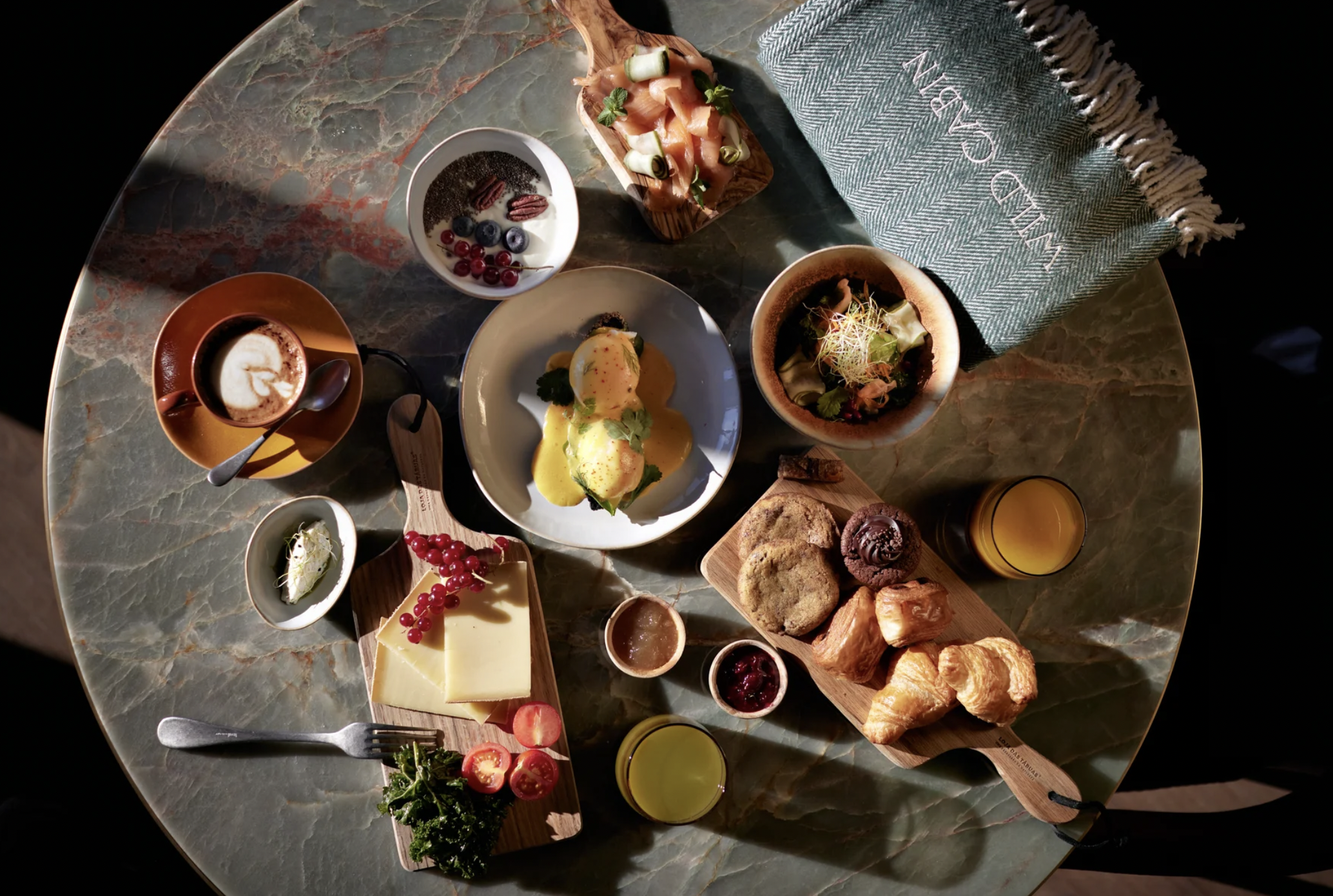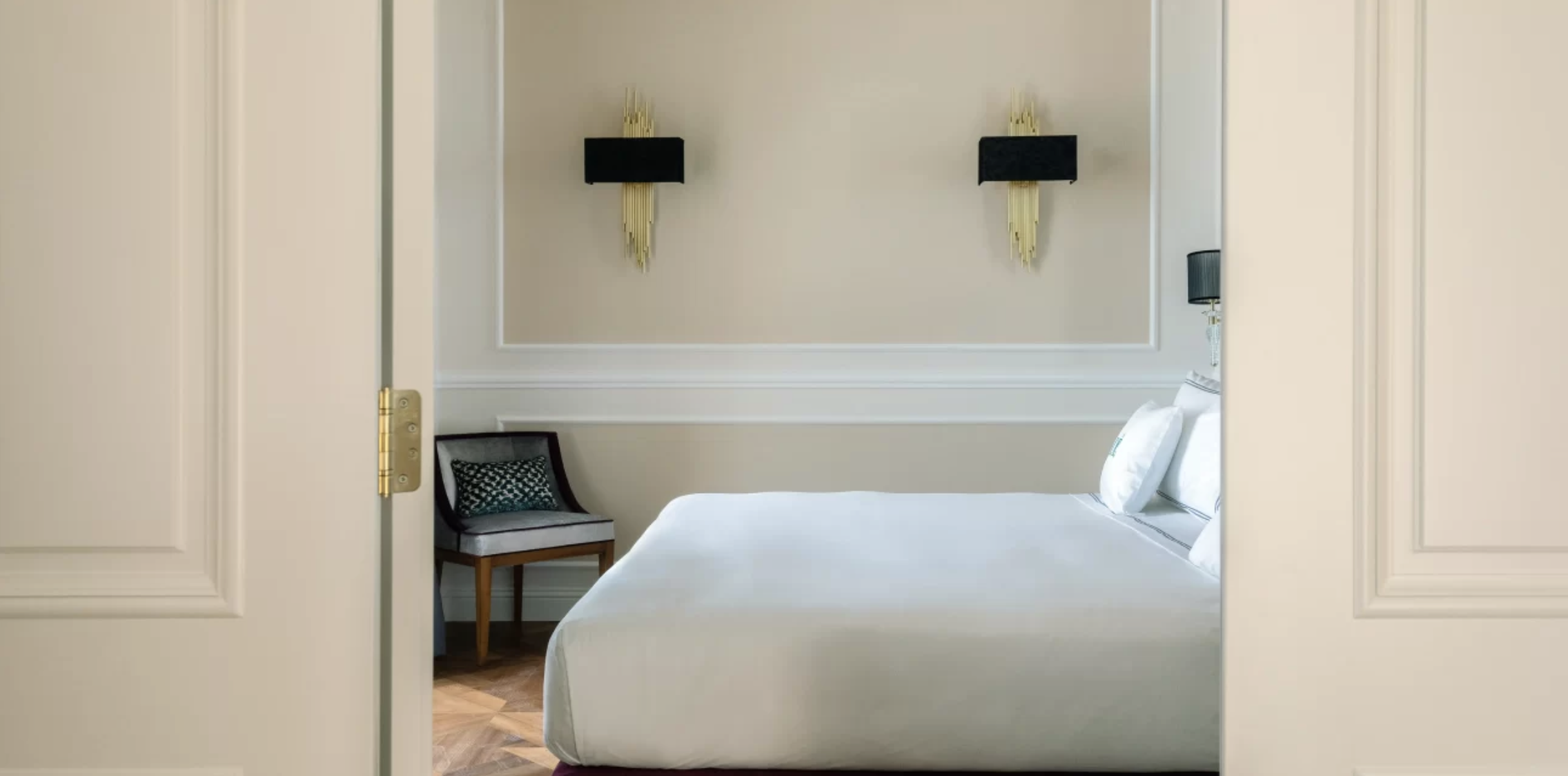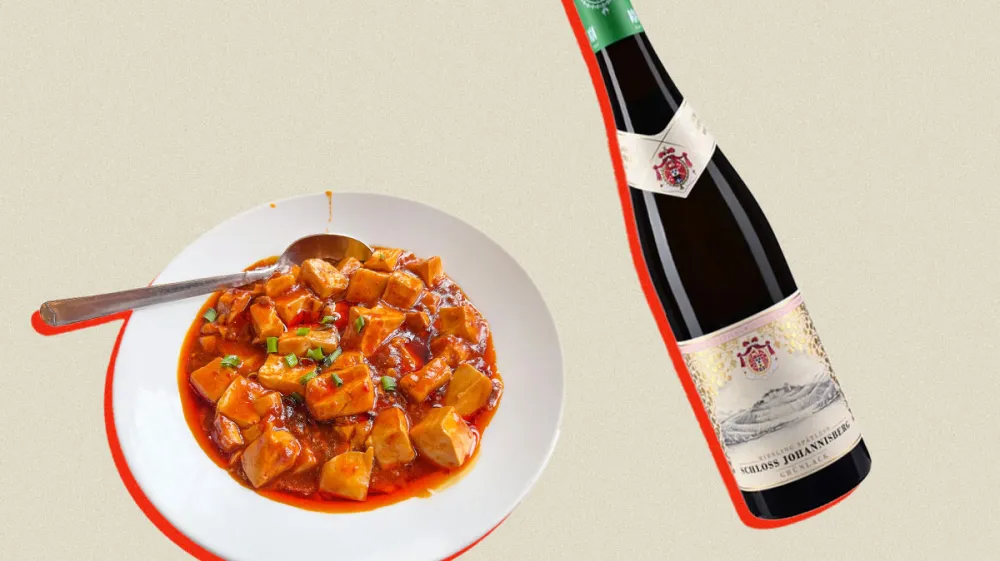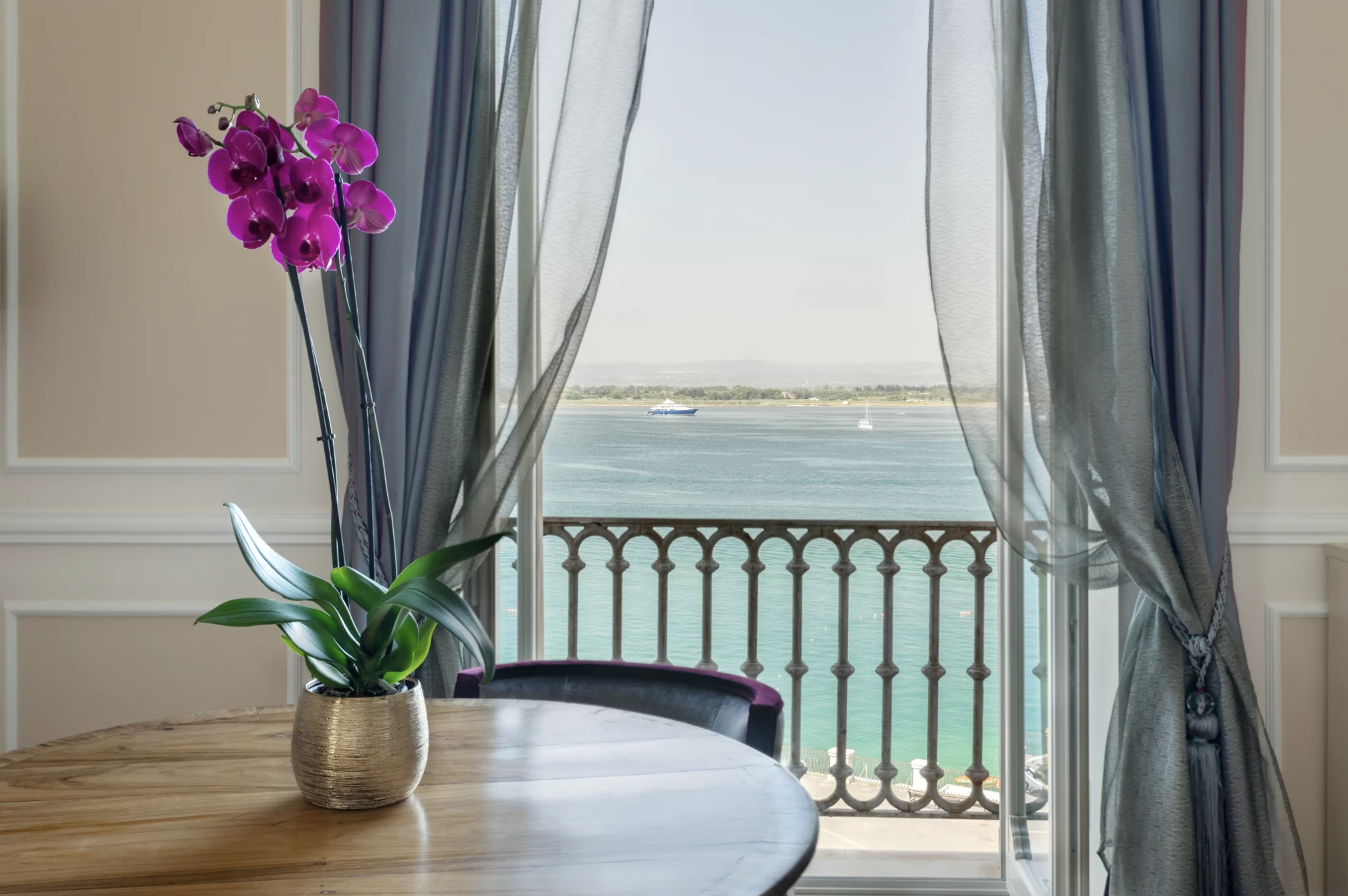
Meet the spirits detective who hunts vintage bottles like ancient artefacts
Edgar Harden has a penchant for finding the ultrarare—from mid-century Drambuie to atomic-era Jim Beam.
Related articles
Just over a decade ago, standing in the dimly lit cellar of a posh London townhouse, Edgar Harden made a snap decision that would change his life.
A seasoned wine dealer, Harden had been summoned to partially liquidate the contents of a client’s cellar, including some ultrarare 1982 Château Mouton Rothschild. Off-handedly, the client mentioned that there might be some 1960s gin—think Mad Men–era—lying around. “Get rid of it,” the collector sniffed. “Take it to the skip.” But Harden didn’t toss the crate of Gordon’s he uncovered; his curiosity piqued, he took it home and made a martini. Harden was floored by the flavour: softer than a bottle from the shelf, with a strong forward note of citrus.
Since mixing that first vintage martini in his kitchen, Harden’s home has been overrun with dusty vintage bottles, mostly stored in cardboard crates in his basement; he guesstimates he currently keeps 3000 or so on hand. That’s because his one retro cocktail transformed Harden into a martini-swilling answer to Indiana Jones, tracking down alcohol rather than artifacts. He now supplies elite bartenders and collectors with everything from mid-century Drambuie to obscure artichoke-flavored amaro Carciofi or atomic-era Jim Beam.

A 30-year-old Grand Marnier from the coronation of Elizabeth II.
Photo: Lauren Joy Fleishman
Now 48, Harden was born in Vancouver and studied art history before stints on staff at the Getty museum in Los Angeles and the Louvre. He then moved into the commercial sector, using his expertise in French decorative arts as a specialist at Christie’s. Because his office there was close to the wine department, he often found himself dragooned into joining tasting sessions and slowly developed additional know-how that broadened his professional connoisseurship. When Harden moved to London in 2008 after marrying a British academic, he had no idea he was walking straight into a gold mine of vintage booze—and a new career that would draw on both his refined taste and his enviable ability to distinguish between a rare discovery and flea-market standard fare.
Wealthy Brits have a long tradition of cellaring wine, and with the Downton Abbey-esque influx of nouveaux riche Americans in the early 20th century, cocktailing became de rigueur and spirits were added to the stock downstairs. But by the late 1960s, diminishing fortunes had led to the demise of private cellar masters and dining out had supplanted lavish dinner parties, leaving ample stocks of gin, rum, rye and cordials to languish. It’s those treasure troves that Harden now hunts down, with a focus on bottles more than 30 years of age. And the hunting is good: A single estate can yield thousands of musty but untouched lots. He stores his most important finds at home but rents a barn outside the city for his overflow. At any one time, he keeps around 6000 bottles in his inventory.
The lure of Harden’s hoard transcends novelty. As classic cocktails came roaring back at the turn of the millennium via the craft-cocktail movement, kickstarted by the likes of the late Sasha Petraske at New York’s Milk & Honey bar, they created a thirst for original ingredients—and a market for forgotten, old bottles. Harden was one of the first to leverage this new craving, but he isn’t alone. Other firms offering similar services for sourcing old bottles include the Netherlands-based Old Liquor Company and Soutirage in Yountville, California, which has broadened its initial wine services to spirits. Harden, though, is inarguably the most respected and connected vintage spirit broker in the world.

Absolut Vodka with a label printed using a hand-engraved plate from long before the distiller’s 1980s rebranding.
Photo: Lauren Joy Fleishman
He is also an insightful guide to this unexpected market. Don’t assume, he warns, that a martini mixed with vintage spirits will taste the way it did when Kennedy was in the White House. Spirits, like wine, evolves in the bottle. The botanicals in gin, for instance, mature at different rates, with the flavour of juniper falling away and the citrus becoming more prominent, as Harden discovered with his epiphany martini. Rum, often bottled at 120 proof, becomes lighter and subtler with age. “Drink the old ones,” he explains, “and you can taste the sunshine.”
Reformulated recipes are another reason cocktail purists flock to Harden’s aptly named Old Spirits Company. A 40-year-old bottle of Southern Comfort, Harden says, is a far cry from the cloying treacle now stocked by college bars. “The older stuff has Irish whiskey in it,” Harden says, passing me a bottle from the 1970s. “And it isn’t artificially coloured.” Harden says manufacturer Brown-Forman tweaked its formulation in the ensuing years to appeal to female drinkers, resulting in what he dismisses as “that sickly red, hen-night shooter.” (New Orleans–based Sazerac Company bought the brand in 2016 and reformulated it yet again; a spokesperson says it has readjusted the recipe to include whiskey once more, “to ensure it was kept as close to the original recipe as possible.”)

Forbidden Fruit Liqueur in the bottle style that would later be used for Chambord.
Photo: Lauren Joy Fleishman
Other brands deny they’ve tampered with the formulas or insist that any small adjustments have not altered the taste. Take Drambuie. Harden says that a bottle of the Scottish liqueur from the 1950s will have a more pronounced peaty or smoky whisky flavour due to the higher-quality malts used in it. In newer Drambuie, Harden suspects that cheaper whiskies might have been used in lieu of the original malts. To an amateur palate, the older version certainly tastes smoother, but is that a result of in-bottle aging or ingredient-tampering? Current Drambuie master blender Brian Kinsman insists that the recipe used now is the same one first documented in 1914, with a base of blended Scotch whisky. He does acknowledge that the sugar supplier changed at one point, because the liqueur was prone to developing sugar crystals once opened. The new sugar supply, Kinsman says, “is sweeter, but there was a lot of work done to ensure the final product retained the original level of sweetness.”
Harden’s clients are primarily fine cocktail bars around the world, which increasingly offer premium-priced vintage versions of Manhattans, martinis and such, using old spirits, often listed on stand-alone request-only menus. Stateside, San Francisco’s Smugglers Cove is a regular buyer of old rums, which owner Martin Cate adds to his 400-strong stock in an area of the bar he calls The Vault. The Aviary in New York and Seattle’s Canon are among his other customers. Harden works on a project basis with private clients, too—the most popular request is a 40-year-old bottle to gift for 40th birthdays. He also helps individuals keen to build their own throwback cellars, like a recent buyer who tasked him with a top-secret mission. For her 25th wedding anniversary, she wanted him to curate a dozen-strong cabinet for her husband, with bottles of gin, whisky and the like dating back to the era of their marriage.
Subscribe to the Newsletter
Recommended for you
The Ultimate Guide to Pairing Wine With Spicy Food
What to drink when your favorite cuisine brings the heat.
Here’s What Goes Into Making Jay-Z’s $1,800 Champagne
We put Armand de Brignac Blanc de Noirs Assemblage No. 4 under the microsope.
By Mike Desimone And Jeff Jenssen
April 23, 2024
You may also like.
You may also like.
Best fo Europe: Six Senses, Switzerland
Mend in the mountains at Crans-Montana.
Wellness pioneer Six Senses made a name for itself with tranquil, mostly tropical destinations. Now, its first alpine hotel recreates that signature mix of sustainable luxury and innovative spa therapeutics in a world-class ski setting.
The ski-in, ski-out location above the gondola of one of Switzerland’s largest winter sports resorts allows guests to schuss from the top of the Plaine Morte glacier to the hotel’s piste-side lounge, where they can swap ski gear for slippers, then head straight to the spa’s bio-hack recovery area to recharge with compression boots, binaural beats and an herb-spiked mocktail. In summer, the region is a golf and hiking hub.

The vibe offers a contemporary take on chalet style. The 78 rooms and suites are decorated in local larch and oak, and all have terraces or balconies with alpine views over the likes of the Matterhorn and Mont Blanc. With four different saunas, a sensory flotation pod, two pools
and a whimsical relaxation area complete with 15,000 hanging “icicles” and views of a birch forest, the spa at Six Senses Crans-Montana makes après ski an afterthought.
You can even sidestep the cheese-heavy cuisine of this region in favour of hot pots and sushi at the property’s Japanese restaurant, Byakko. Doubles from around $1,205; Sixsenses.com
You may also like.
Best of Europe: Grand Hotel Des Étrangers
Fall for a Baroque beauty in Syracuse, Italy.
Sicily has seen a White Lotus–fuelled surge in bookings for this summer—a pop-culture fillip to fill up its grandes dames hotels. Skip the gawping crowds at the headline-grabbers, though, and opt instead for an insider-ish alternative: the Grand Hotel des Étrangers, which reopened last summer after a gut renovation.
It sits on the seafront on the tiny island of Ortigia in Syracuse, all cobbled streets and grand buildings, like a Baroque time capsule on Sicily’s southeastern coast.
Survey the entire streetscape here from the all-day rooftop bar-restaurant, Clou, where the fusion menu is a shorthand of Sicily’s pan-Mediterranean history; try the spaghetti with bottarga and wild fennel or the sea bass crusted in anchovies. Idle on the terrace alfresco with a snifter of avola, the rum made nearby.

As for the rooms, they’ve been renovated with Art Deco–inflected interiors—think plenty of parquet and marble—but the main asset is their aspect: the best of them have private balconies and a palm tree-fringed view out over the Ionian Sea. Doubles from around $665; desetranger.com
You may also like.
Watch of the Week: TAG Heuer Formula 1 | Kith
The legendary sports watch returns, but with an unexpected twist.
Over the last few years, watch pundits have predicted the return of the eccentric TAG Heuer Formula 1, in some shape or form. It was all but confirmed when TAG Heuer’s heritage director, Nicholas Biebuyck, teased a slew of vintage models on his Instagram account in the aftermath of last year’s Watches & Wonders 2023 in Geneva. And when speaking with Frédéric Arnault at last year’s trade fair, the former CEO asked me directly if the brand were to relaunch its legacy Formula 1 collection, loved by collectors globally, how should they go about it?
My answer to the baited entreaty definitely didn’t mention a collaboration with Ronnie Fieg of Kith, one of the world’s biggest streetwear fashion labels. Still, here we are: the TAG Heuer Formula 1 is officially back and as colourful as ever.
As the watch industry enters its hype era—in recent years, we’ve seen MoonSwatches, Scuba Fifty Fathoms, and John Mayer G-Shocks—the new Formula 1 x Kith collaboration might be the coolest yet.

Here’s the lowdown: overnight, TAG Heuer, together with Kith, took to socials to unveil a special, limited-edition collection of Formula 1 timepieces, inspired by the original collection from the 1980s. There are 10 new watches, all limited, with some designed on a stainless steel bracelet and some on an upgraded rubber strap; both options nod to the originals.
Seven are exclusive to Kith and its global stores (New York, Los Angeles, Miami, Hawaii, Tokyo, Toronto, and Paris, to be specific), and are made in an abundance of colours. Two are exclusive to TAG Heuer; and one is “shared” between TAG Heuer and Kith—this is a highlight of the collection, in our opinion. A faithful play on the original composite quartz watch from 1986, this model, limited to just 1,350 pieces globally, features the classic black bezel with red accents, a stainless steel bracelet, and that creamy eggshell dial, in all of its vintage-inspired glory. There’s no doubt that this particular model will present as pure nostalgia for those old enough to remember when the original TAG Heuer Formula 1 made its debut.

Of course, throughout the collection, Fieg’s design cues are punctuated: the “TAG” is replaced with “Kith,” forming a contentious new brand name for this specific release, as well as Kith’s slogan, “Just Us.”
Collectors and purists alike will appreciate the dedication to the original Formula 1 collection: features like the 35mm Arnite cases—sourced from the original 80s-era supplier—the form hour hand, a triangle with a dot inside at 12 o’clock, indices that alternate every quarter between shields and dots, and a contrasting minuterie, are all welcomed design specs that make this collaboration so great.
Every TAG Heuer Formula 1 | Kith timepiece will be presented in an eye-catching box that complements the fun and colour theme of Formula 1 but drives home the premium status of this collaboration. On that note, at $2,200 a piece, this isn’t exactly an approachable quartz watch but reflects the exclusive nature of Fieg’s Kith brand and the pieces he designs (largely limited-edition).

So, what do we think? It’s important not to understate the significance of the arrival of the TAG Heuer Formula 1 in 1986, in what would prove integral in setting up the brand for success throughout the 90’s—it was the very first watch collection to have “TAG Heuer” branding, after all—but also in helping to establish a new generation of watch consumer. Like Fieg, many millennial enthusiasts will recall their sentimental ties with the Formula 1, often their first timepiece in their horological journey.
This is as faithful of a reissue as we’ll get from TAG Heuer right now, and budding watch fans should be pleased with the result. To TAG Heuer’s credit, a great deal of research has gone into perfecting and replicating this iconic collection’s proportions, materials, and aesthetic for the modern-day consumer. Sure, it would have been nice to see a full lume dial, a distinguishing feature on some of the original pieces—why this wasn’t done is lost on me—and perhaps a more approachable price point, but there’s no doubt these will become an instant hit in the days to come.
—
The TAG Heuer Formula 1 | Kith collection will be available on Friday, May 3rd, exclusively in-store at select TAG Heuer and Kith locations in Miami, and available starting Monday, May 6th, at select TAG Heuer boutiques, all Kith shops, and online at Kith.com. To see the full collection, visit tagheuer.com
You may also like.
30/04/2024
06/05/2024
06/05/2024
8 Fascinating Facts You Didn’t Know About Aston Martin
The British sports car company is most famous as the vehicle of choice for James Bond, but Aston Martin has an interesting history beyond 007.
Aston Martin will forever be associated with James Bond, ever since everyone’s favourite spy took delivery of his signature silver DB5 in the 1964 film Goldfinger. But there’s a lot more to the history of this famed British sports car brand beyond its association with the fictional British Secret Service agent.
Let’s dive into the long and colourful history of Aston Martin.
You may also like.
What Venice’s New Tourist Tax Means for Your Next Trip
The Italian city will now charge visitors an entry fee during peak season.
Visiting the Floating City just got a bit more expensive.
Venice is officially the first metropolis in the world to start implementing a day-trip fee in an effort to help the Italian hot spot combat overtourism during peak season, The Associated Press reported. The new program, which went into effect, requires travellers to cough up roughly €5 (about $AUD8.50) per person before they can explore the city’s canals and historic sites. Back in January, Venice also announced that starting in June, it would cap the size of tourist groups to 25 people and prohibit loudspeakers in the city centre and the islands of Murano, Burano, and Torcello.
“We need to find a new balance between the tourists and residents,’ Simone Venturini, the city’s top tourism official, told AP News. “We need to safeguard the spaces of the residents, of course, and we need to discourage the arrival of day-trippers on some particular days.”
During this trial phase, the fee only applies to the 29 days deemed the busiest—between April 25 and July 14—and tickets will remain valid from 8:30 am to 4 pm. Visitors under 14 years of age will be allowed in free of charge in addition to guests with hotel reservations. However, the latter must apply online beforehand to request an exemption. Day-trippers can also pre-pay for tickets online via the city’s official tourism site or snap them up in person at the Santa Lucia train station.
“With courage and great humility, we are introducing this system because we want to give a future to Venice and leave this heritage of humanity to future generations,” Venice Mayor Luigi Brugnaro said in a statement on X (formerly known as Twitter) regarding the city’s much-talked-about entry fee.
Despite the mayor’s backing, it’s apparent that residents weren’t totally pleased with the program. The regulation led to protests and riots outside of the train station, The Independent reported. “We are against this measure because it will do nothing to stop overtourism,” resident Cristina Romieri told the outlet. “Moreover, it is such a complex regulation with so many exceptions that it will also be difficult to enforce it.”
While Venice is the first city to carry out the new day-tripper fee, several other European locales have introduced or raised tourist taxes to fend off large crowds and boost the local economy. Most recently, Barcelona increased its city-wide tourist tax. Similarly, you’ll have to pay an extra “climate crisis resilience” tax if you plan on visiting Greece that will fund the country’s disaster recovery projects.

























